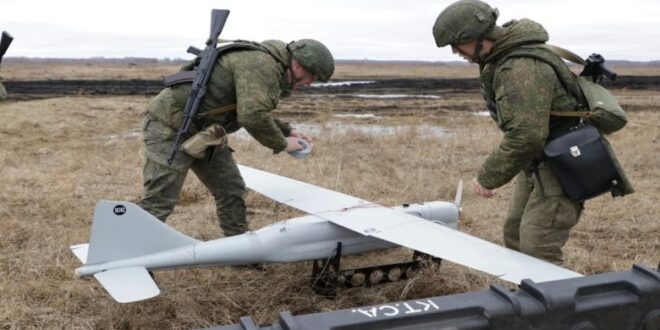In the latest move in China’s delicate balancing act over Russia’s invasion of Ukraine, Chinese drone maker DJI has suspended its operations in both warring nations. The Shenzhen-based company is the world’s largest drone manufacturer.
This move makes DJI the first major Chinese company to stop business in both countries amid a conflict that the West has condemned and sanctioned but China has so far stood mostly on the sidelines despite its alliance with Moscow.
In an April 26 statement, DJI announced that it will suspend all of its business activities in Russia and Ukraine, pending an internal assessment of compliance requirements in various regions.
In another statement, DJI said that it does not sell products to customers who clearly plan to use them for military purposes or help to modify them for military use, and will never accept any use of its products to cause harm.
Moreover, in a separate statement, DJI Europe spokesperson Barbara Stelzner said that the company’s position is “not to make a statement about any country, but to make a statement about our principles.” She also said that DJI abhors the use of its drones to cause harm, and that it is suspending sales in Russia and Ukraine to ensure that no one uses its drones in combat.
“Such use is against our principles and has potential legal compliance implications. Our compliance review covers a large number of aspects. One of them relates to applicable export control laws in various jurisdictions,” Stelzner added.
DJI’s main products are small drones typically used for aerial filming and photography. However, the company’s drones are heavily used by both Russia and Ukraine for reconnaissance, artillery spotting, sniping and ambushes.
Last month, Ukraine Deputy Prime Minister Mykhailo Fedorov posted pictures of DJI Mavic 3 drones in what appears to be the back of a van. He also said Ukraine had bought 2,372 quadcopters and 11 military unmanned aerial vehicles for US$6.8 million.
Aerorozvidka, a civil society organization supporting the Ukrainian military has reportedly used consumer quadcopters to ferret out Russian forces at night before bombing them with anti-tank grenades from locally-made R18 octocopters or calling in artillery fire with Starlink satellite communications.
Similarly, Russian forces have been using drones to spot and knock out Ukrainian artillery and air defense systems. A detailed study of captured Russian Orlan-10 drones found US communications and navigation electronics alongside other China-made parts.
In addition, Ukraine has accused DJI of tampering with its AeroScope drone detection system which provides authorized users with the location, speed, altitude and direction of every DJI drone within radio range (48 kilometers), allowing Russian-operated drones to evade Ukrainian detection.
Drones are a prime example of dual-use technology intended for civilian applications but potentially used for warfare. The ambiguity afforded by such technology is a useful feature for China to balance its interests vis-a-vis Russia, Europe and the US in the context of the ongoing conflict in Ukraine.
The threat of US and Western sanctions against DJI may have been a factor in the company’s decision to suspend its operations in Russia and Ukraine. Such sanctions could lead to the loss of more profitable US and European markets for China’s drones.
However, China has been reluctant to criticize Russia over its invasion of Ukraine, and many Chinese companies in Russia have switched to low-profile operations or minimized the scale of their businesses rather than suspend operations outright.
Russia remains China’s top strategic partner for the purpose of balancing against the US. A Russia weakened by military setbacks in Ukraine, isolated by the international economy and in economic decline is less useful for China as a distraction for the US in Europe away from the Pacific. But it is not clear to what extent China will assist Russia with its beleaguered military situation in Ukraine.
Assisting Russia through overt shipments of military equipment will most likely draw sanctions and huge reputational costs for China. However, the ambiguous nature of dual-use equipment such as drones, semiconductors and communications equipment have so far allowed China to assist Russia without incurring US and Western sanctions.
Sanctions and international isolation may also push Russia to increase dependence on China, raising fears of the former being reduced to a junior partner in their strategic relationship.
Such a situation could force Russia into expediting its domestic projects for critical technologies, but given its economic situation, it may not be able to pursue its goals and give China new leverage over Russia, especially in terms of the latter’s immense natural resources and military industries.
Ultimately, China sees itself as an independent player in relation to the war in Ukraine. Whether it is to maintain a counterbalance against the US in Europe, maintain access to profitable Western markets or consolidate its increasingly senior position in its strategic partnership with Russia, China can be expected to maintain a tenuous and selective neutrality driven by its own self-interests.
DJI’s decision to stop selling drones to both combatants underscores that increasingly apparent point.
 Unmanned Aerial Vehicle The latest drone news
Unmanned Aerial Vehicle The latest drone news

